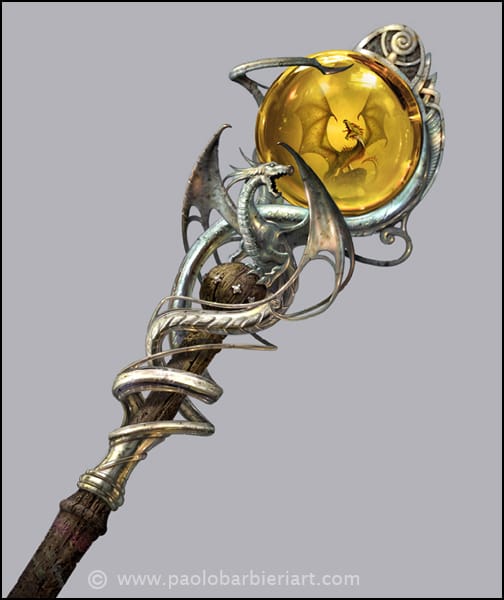So I only read two comics. Spiderman, and Batman.
The problem I’ve run into is with Spiderman, the comic has been running since the 1940s or whatever, as one continuous comic. I’m the type of person who gets obsessive over one thing, instead of casual about 10 things. So my natural instinct is to start reading at issue 1, and then go until current. Let’s see, how many issues are there? Ohhhh…oh that’s a lot of issues…
So obviously I’m not going to read them all, and not even in order. Even though that’s what my brain is telling me I should do. At some point I have to let the logical side of me take the wheel and say NO! You’re not going to go reading hundreds if not thousands of comics, just so you can stay current with monthly releases!
So my other option is Batman.
And Batman releases little arcs I guess you could call them. I’m currently reading a little 5 comic mini-series, which is like the perfect size for me. A nice complete comic I can read once per day, for 10 minutes, and at the end of the week I have a complete story. But the problem is, each complete story doesn’t carry over to the next. Batman assumes you know a few core things about Batman. He’s Bruce Wayne, his parents were murdered when he was a kid. He’s constantly fighting crime to deal with his own mental illness of not being able to cope with the concept of crime. You know…the basics.
But the individual stories don’t carry over. Batman could kill Catwoman in a story. Murders her completely dead. And that will carry over the following issues. Until they reboot the whole damn thing, and then Catwoman is back. Never murdered. That’s no longer canon. It mattered to the story you already read…but that’s done now. We’ve moved on.
So I guess the thing I don’t understand is, why can’t comic books find the balance between “Neverending story that’s literally lasted since before your grandpa was born, but somehow is still going today with the same people”, and “Basic characters and themes stay the same, but individual stories will eventually mean absolutely nothing for having had them happen”? Why can’t we get comics that can be 5-10 issue complete stories, but if a future story wants to mention it’s past, then this character died. And no bringing them back. No making a replacement. I still haven’t gotten in the comics how Miles Morales exists. I heard of him through the video game…no clue how he comes to be though, or why he replaces spiderman.
I guess I’m just having difficulty finding points in comics where I’ll say “I start here”. Because I would like end dates. The open ended date of spiderman is intimidating. Even though Batman offers conclusions to the story, it’s also disheartening to know that eventually what you’re reading won’t matter.
Follow authors, not characters. Most authors will have more cohesive stories during their run and you can basically ignore the rest of the continuity (at least while you’re reading each specific author).
Plus if you find an author you really like for one franchise, you’ll probably like them in other franchises, too. It’s also a great way to discover new characters. Fire example, I really like Jeff Lemire’s independent and Vertigo comics, so I tried his Moon Knight arc and now Moon Knight is one is my favorite characters (at least for certain authors)
Also, try reading some smaller/independent/creator-owned comics. A lot of the time, it will be the same author for the entire series, so they can be more consistent with the continuity and frequently have one cohesive plot for the entire series. Hellboy is a great place to start if you like Batman and/or Lovecraftian themes and monsters.
I obviously love talking about comics, so hit me up with more specific preferences and I’ll give you some more recs
Edit: Also, don’t spend so much time looking for continuity. These are all just fictional characters we use to tell stories. In “Dark Knight Returns,” Frank Miller was telling a different story with a different point than Mike Mignola in “The Doom That Came to Gotham,” which is different than Jeph Loeb in “The Long Halloween.” These are all fantastic Batman stories, and trying to make them all fit the same continuity takes away from the stories themselves.
Sooo… it’s complicated…
First, you’re talking about 2 different companies and each has their own methodology.
Batman is from D.C. comics and first appeared in Detective Comics #27 in 1939. He became so popular that they added a second comic simply called “Batman” the next year in 1940.
Same deal with Superman in Action Comics #1 in 1938 and then Superman #1 in 1939.
In the 1950s, superhero comics became less popular, and comics in general were being attacked by a fraudulent psychologist named Frederick Werthham. There were congressional hearings, the whole 9 yards.
To avoid government regulation, comics had to self-regulate, and so the Comics Code Authority was created.
D.C. took this opportunity to re-invent itself and re-launched a new version of the Flash in Showcase #4 in 1956.
That, officially, ended the Golden Age of comics and started the Silver Age of comics.
But, D.C. started getting questions. Didn’t they already have a Flash? And a Green Lantern? Who are these new characters? What’s going on? How can Superman and Batman have been around 20 years and still be the same age?
To explain this, D.C. introduced “The Flash of Two Worlds” in The Flash #123 in 1961.
All the previous Golden Age stories actually happened… on Earth 2. The PRESENT day stories are happening on Earth 1.
Once they set that precedent, they then began crossing over characters from Earth 1 and Earth 2 in Justice League starting in Justice League of America #21 and 22 in 1963.
As D.C. gained other comics properties or introduced other variations, they would simply explain it away as happening on a different Earth. So when they aquired the Fawcett characters (Captain Marvel, better known as Shazam!) that became Earth S and so on.
20 some odd years later, in the 1980s, they decided this was entirely too convoluted and decided to simplify things with the “Crisis on Infinite Earths”.
They outright destroyed multiple continuities and boiled it all down to 5 “Earths”, merged them down into one, and started re-telling the stories from scratch.
This proved SOOOO massively successful, that D.C. has kept doing it. There’s an index of all the “Crisis” stories and each one serves as a new jumping on point for new readers. The most recent one being “Dark Crisis on Infinite Earths”.
https://www.cbr.com/every-dc-crisis-event-comic-reading-guide/
So, realistically, if you want to read something like Batman, you don’t have to read EVERYTHING since 1939, that Batman doesn’t REALLY exist anymore. Just follow it from the last Crisis or the most recent #1 issue indicating the book has been re-booted.
MARVEL on the other hand, does NOT do this.
Spider-Man first appeared in Amazing Fantasy #15 in 1962. It’s the same Spider-Man that has ever been. No reboots.
I am NOT getting into One More Day. DO NOT GO THERE.
As new creatives have come on board, new Spider-Man titles have launched, so Amazing Spider-Man #1 was the first following Amazing Fantasy #15, that was 1963, Marvel Team-Up #1 in 1972, Peter Parker the Spectacular Spider-Man in 1976, Web of Spider-Man #1 in 1985, and the Todd McFarlane just plain “Spider-Man” in 1990.
What Marvel figured out is that they don’t need some industry wide “Crisis” to reboot a book. They do it ALL THE TIME. Generally when a new creative team wants on board. They just did it with all the X-Men books.
The old continuity is still there, but you don’t have to know it, just jump on with the new #1 and enjoy the ride.
Just don’t get TOO attached, because Marvel will reboot AGAIN AND AGAIN for any reason at all or no reason in particular.
So you get Amazing Spider-Man #1, 1963
Amazing Spider-Man #1, 1998
Amazing Spider-Man #1, 2014
Amazing Spider-Man #1, 2015
Amazing Spider-Man #789, 2017
Amazing Spider-Man #1, 2022I wish I was making this up. The current series will have the present series # as well as a legacy number, as though the original title never ended.
The good news is, to keep up, you really only have to go as far back as the most recent #1. In this case, 66 issues since 2022.
I LOVE your enthusiasm. I don’t fully understand everything you said, but that’s ok. I just love it when people are excited for stuff.
Well, the reboots, resets, and retcons tend to make it feasible to suspend disbelief at any given time along the publication history.
But, like you said, it tends to break once you try to read widely separated segments, or read different arcs in order.
Some of that, comic geeks develop head canon for. Some of it, the companies have in universe explanations for, like Marvel’s time elasticity where it allows Captain America to both have been in ww2 and awakened at any point in the past that’s useful, or how people age (or don’t age) even without super power reasons.
My personal way of maintaining immersion in the face of all the silliness is to take older issues as a synopsis, or as a kind of inner fiction behind the fiction. Like, all the older Spiderman stuff is where he told stories, or someone else wrote it about past events. It means that when there’s fuckery in ten years, those old issues aren’t contradictions, they’re more like a prequel that isn’t historically accurate.
Which, I get it, is a lot of damn work for someone coming into it at this point in time.
But there’s an advantage to that long (if jumbled and poorly managed) background. There’s a continuity between generations, and there’s the ability to see the old stuff as a part of its era of writing and art without having to just erase it up keep having new writing and art.
DC makes it both easier and harder than Marvel in that regard. Their semi regular “crises” do all that work. They say “hey, here’s the new backstory we’re working with, here’s what’s relevant, if it isn’t your thing, wait a decade and it’ll switch again”. So there’s always going to be an ease with jumping into DC as published. It does break some of the continuity though.
What’s really cool about the way DC handles their “multiverse” is that they’ve had elseworlds and other alternative frameworks for decades now. They’ve had multiple earths with similar but not the same histories. So you don’t need to know the entire backstory, regardless of what form of media it is. You can casually go between any of the animated animated, live action, comic books, comic strips, and just enjoy the ride because the other ones still exist as their own thing.
The era of 52, new 52, silver age, golden age, they all exist as their own thing. And they exist in shared continuities, and exist in updated versions.
The way that makes DC harder is that nothing ever feels finished. Yeah, some titles will get tied up before a reboot, but it isn’t an ending, just the last story arc in that version. The ones that don’t get a finale just float unfinished in any way. I can jump into any era of DC, read as much as I want, but it’s going to end without any real closure.
I’m echoing some of what you said here, I know. It’s so that there’s less gaps in the comment that I’m writing in between real life stuff.
That part about having no closure though, it doesn’t mean it didn’t matter. It does still have echoes in the next iterations. So the reading isn’t wasted, it just sometimes feels a little hollow.
As far as Miles goes, if you want to know that, I’ll give the basics. If you don’t, just stop reading here. Anyone else, spoilers ahead
Miles Morales started in an alternate universe to the default Marvel universe. They all have numbers, but the one Miles is from is typically referred to as the Ultimates universe because that was part of all the titles; Ultimate Avengers, Ultimate X-Men, and Ultimate Spider-Man.
In the Spider-Man comic in that universe, Peter Parker was the first Spidey. Stuff happened, he gets killed. But, during the “stuff”, Miles gets bitten by a spider too, and gets a slightly diffee set of powers. He then becomes the focus of the series.
The Ultimates universe ends with a big thing, and Miles crosses over to become part of the new unified core Marvelverse. There’s some fuckery after that, what with DOOM! being god emperor for while and whatnot that partially rewrote how Miles is in the core verse, but that’s details better read in their original form.
Invincible is finished story, which did actually progress and events weren’t retconed.
Why can’t we get comics that can be 5-10 issue complete stories, but if a future story wants to mention it’s past, then this character died.
There are lots of those, but you may not hear about them because they’ve ended years ago.
If you want to stick to superhero stories check out the bound reprints in Trade Paperback form. Here’s one to try out:
Its 4 story arcs with 15 to 29 issues for each arc. Each one does what you describe you want. There is continuity between each, but also consequences from prior arcs that impact the story of the following. Characters die and stay dead. Those deaths have meaning and change the direction and tone of the story.
This is really only a problem with the big publishers.
Marvel is suffering the same fate as Hollywood movies. Predictable sells, so they stay the same more or less. Peter is always poor, always has bad luck with women, etc. They also have a huuuuuuuuge history that they’ll reference constantly. Authors note: we haven’t seen this character for 30 years!
I don’t read a lot of DC, but they do seem to change it up too much. There’s always a new reboot or something going on.
Are you married to super hero comics? If you branch out to other less hero focused publishers you can find stuff like you’re talking about. Shorter stories, smaller teams, more artistic passion. I love the stuff from Dark Horse and Boom. Image also has some great titles. Even those are semi-large publishers. You can go smaller like Magma, Blood Moon, DSTLRY, etc.
My advice is to branch out. Your local library may have TPBs from smaller series if you don’t want to commit right away.
I definitely recommend picking up trade paperbacks instead of individual issues if you don’t want to worry about continuity. They usually all have what you’re looking for: a self contained story line where you just need to know the basics of the character.
I highly recommend the various Spider-verse storylines, personally.
Also many issues and trades will have narrator boxes explaining the gist of what you need to know to have context from past issues you may not have read, almost always citing the exact issue if you’re curious (obviously that probably helps with sales too).
The Nick Spencer run of Spider-Man was excellent, IMO, and has some amazing art to accompany it with some absolutely top notch two page spreads to boot.
You didn’t even mention storylines that continue across five different titles!
It’s all to keep people buying multiple books. It’s purely a sales thing.
I would maybe suggest looking into trade paperbacks, which are larger, bound books that are collections of all titles and issues that comprise a full storyline. Also, look into graphic novels, which are stand-alone books that are the equivalent of a dozen issues or so. There are tons of them out there with many types of story genres and styles.
When I used to collect comics, I more followed the artists and the art styles, being an artist myself, rather than following mainstream story arcs. There were some titles that I followed regular issues but those were ones that didn’t gimmick across the gamut of titles purely to sell more.
Also mini-series are a nice option - these usually can be found as TPBs later as well.
One more thing is maybe look at some other publishers too. I was extremely fond of Dark Horse, as well as some other smaller outfits. DC and Marvel are the two giants, and so they will always be going the mainstream route and that’s all built around massive sales. They’re still fantastic - but with some smaller publishers you might find a lot more gems that are easier to manage start to finish.
I am a fan of Marvel / DC (more Marvel, less DC), but I am having the same issue with them nowadays. I like complete stories with a beginning, a middle and an end, it’s starting to get annoying (for me) to read a great Spider-man ark where everything is finally “they live happily ever after”, but knowing next week something new is going to come and wreck everything, and the guy is never going to get a break until some writer kills him for good.
Personally, I am slowly moving towards other comic books, by other publishers, like Image Comics. They publish books that have a finite run that finishes the story. Some are 100s of books long and some only have few issues, but they all (generally speaking) end and finish the story.







